The Playbook for Explosive Growth: 'Hacking Growth'

Growth hacking, a term that has gained significant traction in the startup ecosystem, refers to a process driven by a blend of marketing, data analysis, and product development with one sole purpose: growth. This unconventional approach to growth, focused on rapid experimentation across marketing channels and product development paths, aims to identify the most effective, efficient ways to grow a business. "Hacking Growth," authored by Sean Ellis and Morgan Brown, stands as a seminal work in this field, offering a comprehensive guide through the principles, strategies, and real-world applications of growth hacking.
Introduced by Sean Ellis, who coined the term "growth hacker" in 2010, this concept has evolved from a novel idea into a fundamental strategy for startups and established companies alike. Ellis, alongside Morgan Brown, has distilled years of experience in accelerating business growth into their book, presenting an accessible blueprint for explosive growth.
The book not only demystifies the process of growth hacking but also provides an actionable playbook for organizations of all sizes. It emphasizes a data-driven, experiment-based approach that systematically breaks down the growth process into manageable components. Through the lens of 'Hacking Growth,' we embark on a journey to explore how companies can leverage this methodology to drive unprecedented growth rates.
In the following sections, we'll get into the genesis of growth hacking, its core principles, and practical insights from 'Hacking Growth' on implementing these strategies for explosive growth. With detailed case studies and a look into the necessary tools and ethical considerations, this article aims to equip readers with a deep understanding of growth hacking and how it can be applied to turbocharge a company's growth trajectory.
The Genesis of Growth Hacking

The concept of growth hacking did not emerge overnight. It is the result of the evolving digital landscape, where traditional marketing strategies began to falter in the face of the internet's vast, fast-moving environment. This section goes into the origins of growth hacking, its founding figures, and how it became a cornerstone for companies seeking explosive growth.
Historical Context and Evolution
Growth hacking's roots can be traced back to the early 2000s, when startups began to realize the potential of leveraging digital channels for exponential growth. The dot-com bubble had just burst, leaving a landscape ripe for a new breed of marketers: those who could navigate the nascent digital world with agility and creativity. These individuals began to experiment with search engine optimization (SEO), email marketing, and viral strategies, laying the groundwork for what would later be recognized as growth hacking.
The turning point came in 2010 when Sean Ellis, who had played pivotal roles in the growth phases of companies like Dropbox, Eventbrite, and LogMeIn, coined the term "growth hacker." Ellis recognized that traditional marketers, with their broad focus on branding and market share, were not always equipped to drive the rapid growth startups required. Instead, he proposed the growth hacker: a role that would blend marketing, technology, and data analysis to achieve growth objectives.
Key Figures and Companies
Sean Ellis's contribution to the growth hacking movement cannot be overstated. His methodology, focusing on high-impact, low-cost strategies coupled with relentless testing and iteration, has influenced countless startups. Another significant figure is Andrew Chen, who further popularized the term through his influential writings on growth hacking, emphasizing its importance in the tech startup world.
Companies like Facebook, Twitter, and LinkedIn serve as prime examples of growth hacking success stories. Facebook, for instance, implemented numerous tactics to increase user engagement and retention, such as the "People You May Know" feature, which significantly boosted its growth. LinkedIn's "public profile" feature, encouraging users to maintain their profiles for visibility on search engines, is another excellent example of a growth hack.
The Rise of Growth Hacking
As digital platforms evolved, so did the opportunities for growth hacking. The rise of social media, mobile technology, and big data analytics provided new avenues for growth hackers to explore and exploit. This period saw a proliferation of tools and software designed to automate and optimize growth hacking processes, from A/B testing to customer data analysis, further embedding growth hacking into the fabric of digital marketing.
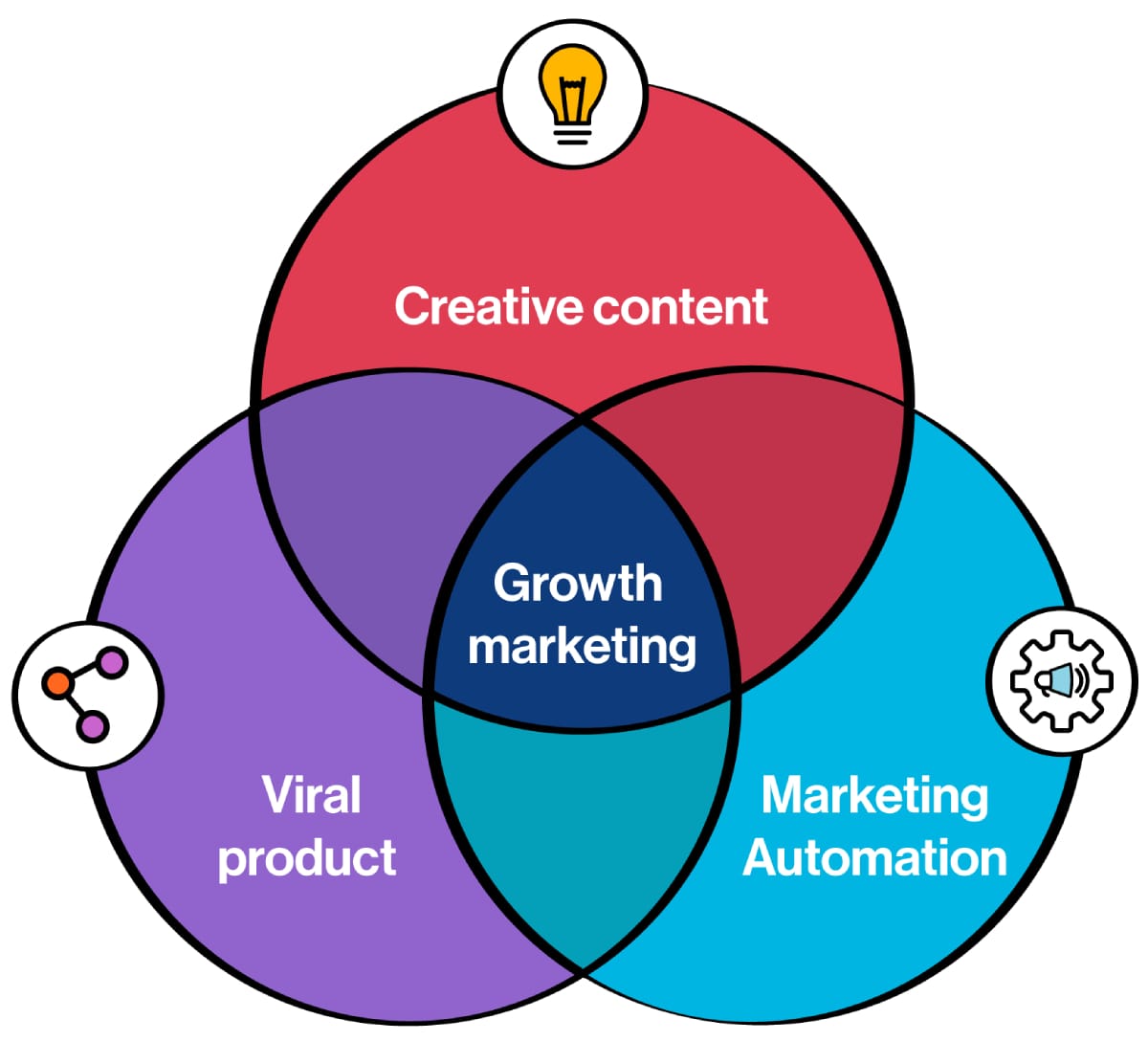
Growth hacking has now become synonymous with startup success, with an increasing number of companies adopting its principles to drive rapid growth. This shift reflects a broader recognition that in the digital age, growth can be engineered and accelerated through strategic, data-driven approaches.
The 3 Core Principles of Growth Hacking

Growth hacking is distinguished by its singular focus on growth, driven by rapid experimentation across marketing channels and product development to identify the most efficient ways to grow a business. Central to this approach are several key principles that guide growth hackers in their quest for explosive growth.
1) The Growth Hacking Funnel
At the heart of growth hacking is the funnel, a framework that maps out the customer journey from initial awareness to active advocacy. The funnel is typically segmented into stages such as Acquisition, Activation, Retention, Revenue, and Referral (AARRR). Each stage represents a specific phase in the customer lifecycle, with distinct goals and metrics.
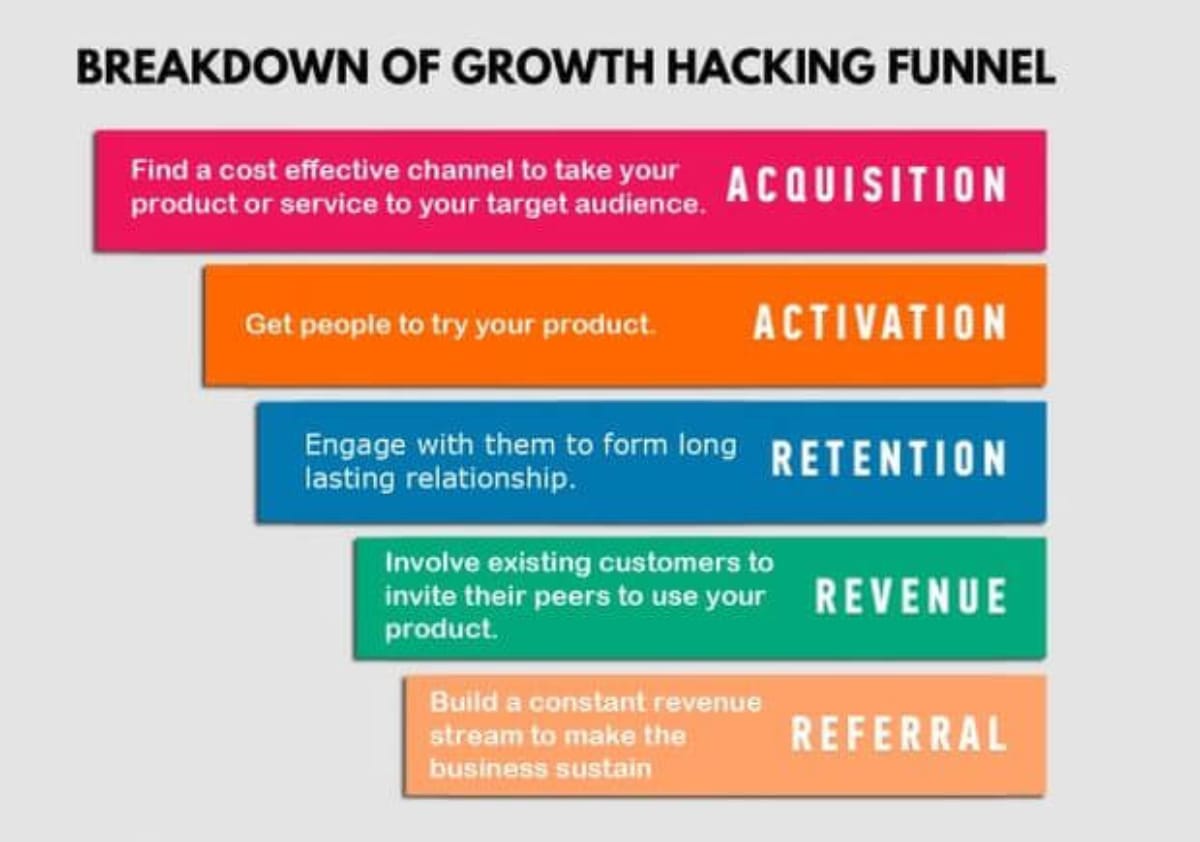
- Acquisition: How users find your product.
- Activation: The first experience users have with your product.
- Retention: Keeping users coming back.
- Revenue: How you make money from your users.
- Referral: Users promoting your product to others.
By dissecting the customer journey into these stages, growth hackers can pinpoint where to focus their efforts for maximum impact. We will go deeper into these in the next section.
2) Data-Driven Decision Making
Data is the compass that guides growth hackers. Every hypothesis, experiment, and strategy is rooted in data analysis. The objective is to make decisions based on what the data reveals about user behavior, preferences, and the effectiveness of growth initiatives. This relentless pursuit of insights allows for a highly targeted approach that continually refines and optimizes growth strategies.
3) The Iterative Process: Analyze, Ideate, Prioritize, Test, Analyze Again
The iterative process is the engine of growth hacking. It begins with analyzing data to identify opportunities or bottlenecks within the funnel. From there, the team ideates, creating a list of potential experiments to address these insights. These ideas are then prioritized based on their expected impact and ease of implementation.
Testing is the next step, where hypotheses are put into action through controlled experiments. Finally, the results are analyzed to learn what worked and what didn’t, feeding into the next cycle of ideation. This process is continuous, with each iteration designed to propel growth further.
Case Studies from 'Hacking Growth'
To illustrate these principles in action, "Hacking Growth" presents several case studies of companies that have successfully leveraged growth hacking strategies.
Example 1: Dropbox's Referral Program
Dropbox is often cited as a quintessential growth hacking success story, largely due to its innovative referral program. Faced with the high cost of customer acquisition, Dropbox turned to its existing users to drive growth. By offering extra storage space for both the referrer and the referee, Dropbox sparked a viral growth loop that significantly increased its user base without the need for traditional advertising.
Example 2: Airbnb's Craigslist Integration
Another classic example of growth hacking is Airbnb’s use of Craigslist to boost its listings. By enabling users to cross-post their Airbnb listings on Craigslist with a simple click, Airbnb tapped into Craigslist's vast user base, driving significant traffic and new users to its platform. This move, though controversial, was a game-changer for Airbnb’s growth in its early days.
Growth Hacking Funnel Breakdown
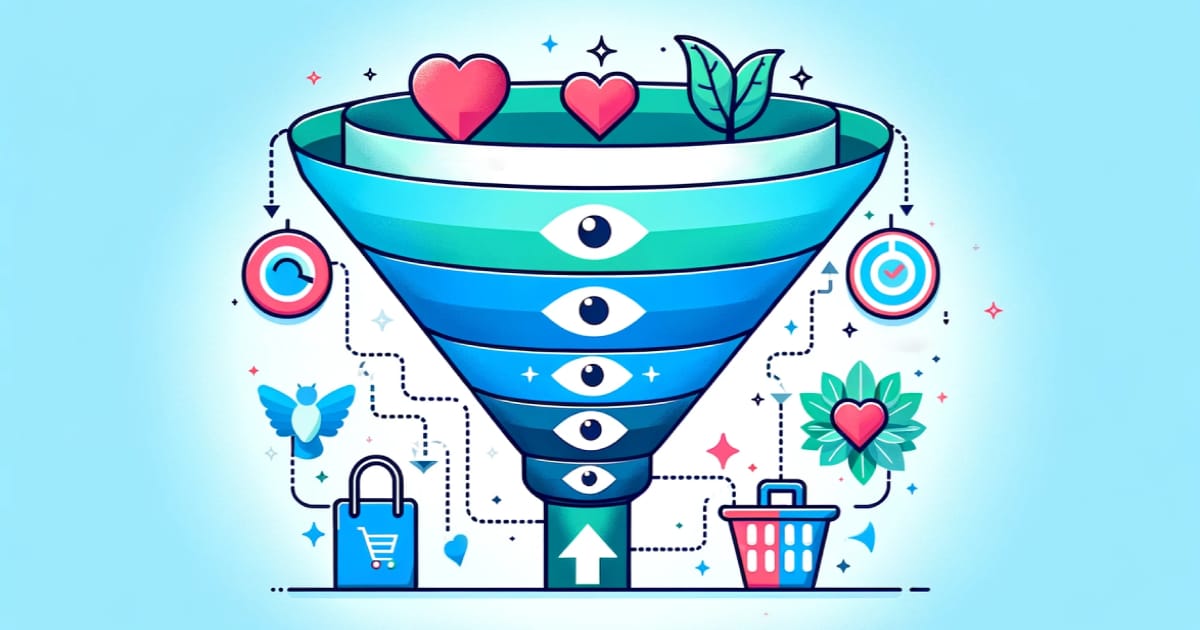
The implementation of growth hacking strategies is methodical, requiring an understanding of where to apply effort for maximum impact. Below, we detail strategies across the Acquisition, Activation, Retention, Revenue, and Referral stages.
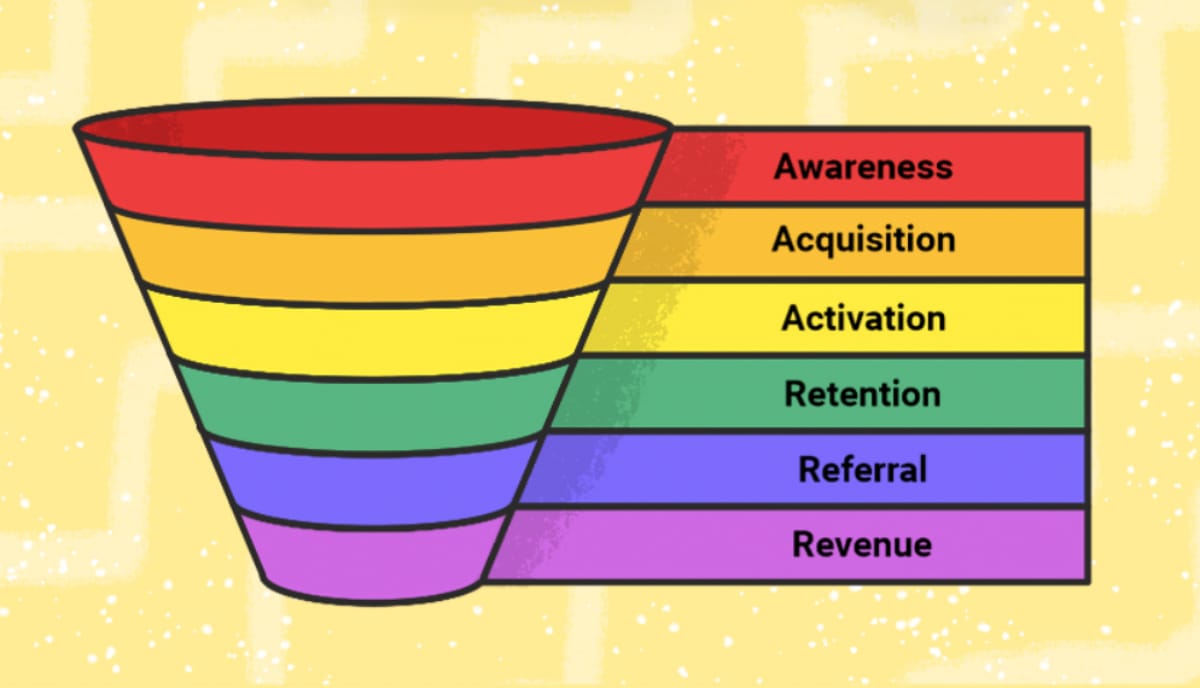
Acquiring Users
The first step in the growth hacking funnel is acquiring users. This stage focuses on attracting potential customers to your product or service. Key strategies include:
- Content Marketing: Developing valuable content that addresses the needs and interests of your target audience can drive organic traffic through SEO and social shares.
- Paid Advertising: Utilizing targeted ads on platforms like Google, Facebook, and Instagram can quickly bring your offering in front of a large audience.
- Viral Marketing: Creating shareable content or incentives that encourage users to spread the word about your product can lead to exponential growth.
Activating Customers
Activation refers to the process of turning an acquired user into an active user. This stage is crucial for making a strong first impression. Strategies include:
- Onboarding Optimization: Streamlining the onboarding process with tutorials, tips, and support can help new users find value in your product more quickly.
- Product Demos and Trials: Offering demos or free trials can showcase the value of your product and encourage users to continue using it.
Retaining Users
Retention strategies focus on keeping users engaged and active over time, which is vital for sustainable growth. Tactics include:
- Personalization: Tailoring the user experience based on individual behavior and preferences can increase engagement and loyalty.
- Feedback Loops: Regularly collecting and acting on user feedback demonstrates that you value their input, improving satisfaction and retention.
- Email Marketing: Sending targeted, valuable email content can keep users engaged and informed about new features or content.
Driving Revenue
The ultimate goal of most businesses is revenue generation. Growth hacking strategies here focus on monetizing the user base effectively. Techniques include:
- Freemium Models: Offering a free basic version of your product can attract users, with premium features available for a fee.
- Tiered Pricing: Providing multiple pricing tiers caters to different segments of your market, making your product accessible to a broader audience.
- Cross-selling and Upselling: Recommending related products or premium features to existing customers can increase the average revenue per user.
Encouraging Referrals
Referrals can significantly amplify growth by leveraging your existing user base to attract new users. Strategies include:
- Referral Programs: Incentivizing current users to refer new ones with rewards or discounts can create a powerful growth loop.
- Social Proof: Showcasing user testimonials and case studies can build credibility and encourage others to try your product.
- Influencer Partnerships: Collaborating with influencers who resonate with your target audience can drive awareness and adoption.
Implementing these strategies requires a holistic approach, where each tactic is tested, analyzed, and refined based on its performance. The key is to remain agile, adapting strategies as you gather more data and learn what resonates with your audience.
For instance, Dropbox’s referral program was not just about giving away free space; it was a carefully tested strategy that tapped into the inherent value of the product. Similarly, Airbnb’s Craigslist integration showed ingenuity in leveraging an existing platform to drive growth.
These examples illustrate the importance of creativity, experimentation, and data analysis in driving explosive growth. The next sections will delve into the practical aspects of building a growth team, leveraging tools, and navigating the challenges and ethical considerations of growth hacking.
Implementing a Growth Hacking Team

Building a team dedicated to growth hacking is a strategic move that can significantly enhance a company's ability to identify and capitalize on growth opportunities. Here, we discuss the composition of such a team, its structure, and the cultural elements that support its success.
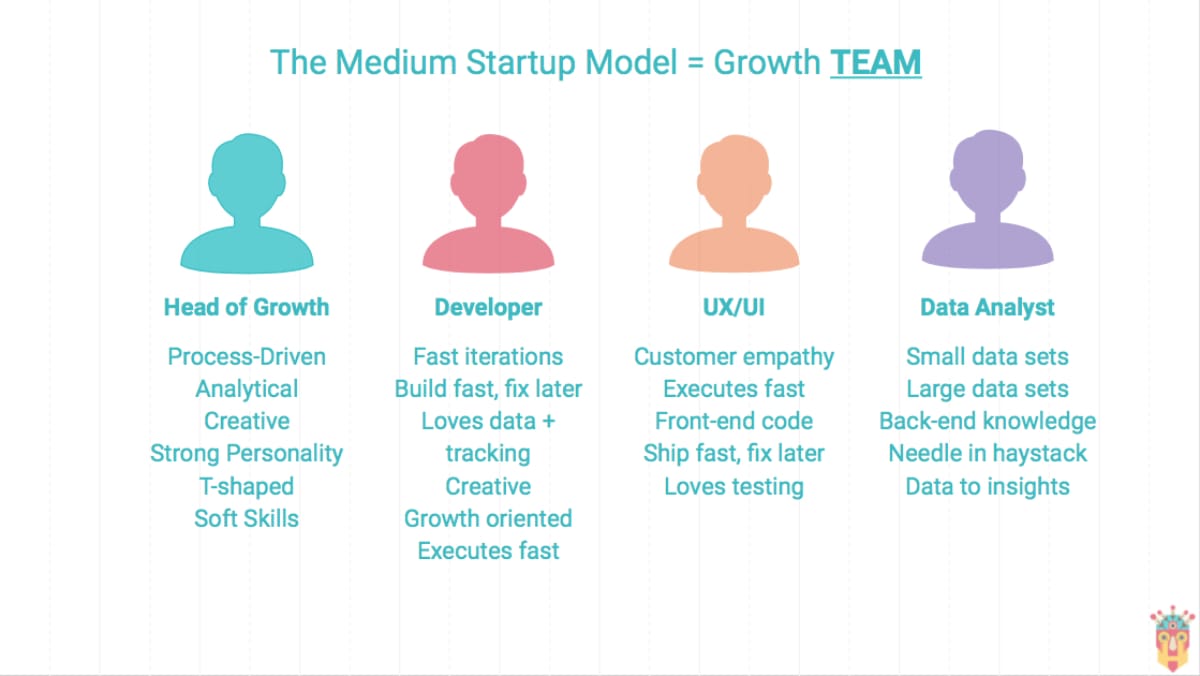
Key Roles and Responsibilities
A growth hacking team typically comprises individuals with diverse skill sets, united by their focus on driving growth. Essential roles include:
- Growth Lead: Oversees the team's efforts, setting goals, and prioritizing growth experiments. This person needs a strong analytical background and a deep understanding of the business.
- Product Manager: Focuses on developing and refining the product to meet users' needs and drive growth.
- Data Analyst: Responsible for measuring and analyzing data from experiments and user interactions, providing insights that guide decision-making.
- Marketing Specialist: Crafts and executes strategies to acquire and retain users, often through content, social media, and email marketing.
- Engineer/Developer: Implements the technical aspects of growth experiments, from website adjustments to new feature development.
- Designer: Ensures that all user-facing elements are optimized for conversion and engagement, from web design to marketing materials.
Structuring for Agility and Effectiveness
The structure of a growth hacking team is as important as its composition. Effective teams are often cross-functional, allowing for rapid iteration and implementation of experiments. They operate with a high degree of autonomy, empowered to make decisions based on data rather than waiting for executive approval. This agility enables the team to test and learn at a pace traditional teams might not match.
One successful model is to have the growth team work in sprints, similar to agile software development. Each sprint focuses on a specific growth goal, with team members contributing their expertise to design, test, and analyze experiments.
Building a Culture of Experimentation
Perhaps the most critical element in fostering a successful growth hacking team is the establishment of a culture that values experimentation, learning, and failure as part of the growth process. Key cultural attributes include:
- Openness to Risk: Encouraging calculated risks and accepting that not every experiment will be a success.
- Data-Driven Decision Making: Making decisions based on data, not intuition or hierarchy.
- Continuous Learning: Promoting an environment where every test, whether successful or not, is a learning opportunity.
- Collaboration: Facilitating close cooperation across departments and specialties, breaking down silos that can hinder growth efforts.
Tools and Resources for Growth Hackers

The right set of tools can significantly amplify a growth team's efforts, enabling more efficient data analysis, experiment tracking, and user engagement. Below, we highlight categories of tools essential for various stages of growth hacking, along with resources for ongoing learning and community engagement.
Essential Software and Tools
- Analytics and Data Analysis: Tools like Google Analytics, Mixpanel, and Amplitude offer deep insights into user behavior and campaign performance, enabling data-driven decision-making.
- A/B Testing and Experimentation: Platforms such as Optimizely and VWO allow teams to test different versions of webpages, features, or user paths to determine what works best.
- Customer Relationship Management (CRM): Systems like Salesforce and HubSpot help manage leads and customer interactions, crucial for personalizing user experiences and optimizing the sales funnel.
- Email Marketing and Automation: Services like Mailchimp and Marketo support the automation of email campaigns, facilitating personalized communication with users at scale.
- Social Media and Content Marketing: Tools like Hootsuite, Buffer, and BuzzSumo assist in scheduling social media posts and analyzing content performance, vital for engaging users and spreading brand awareness.
Recommended Reading and Resources
- "Lean Analytics" by Alistair Croll and Benjamin Yoskovitz: Provides insights on using data to build a better startup faster, emphasizing the importance of analytics in growth hacking.
- "Traction" by Gabriel Weinberg and Justin Mares: Outlines a framework for achieving customer growth, offering practical advice on testing different channels and strategies.
- "Growth Hacker Marketing" by Ryan Holiday: A primer on the mindset and tactics of growth hacking, showcasing how marketing has evolved in the digital age.
Online Communities and Forums
- GrowthHackers.com: A platform founded by Sean Ellis, offering articles, discussions, and case studies on growth hacking.
- Reddit's r/growthhacking: A subreddit dedicated to growth hacking, where users share strategies, ask questions, and discuss trends.
- Indie Hackers: A community for entrepreneurs, where growth tactics, startup strategies, and business challenges are frequently discussed.
Challenges and Ethical Considerations

As with any approach focused on rapid experimentation and growth, growth hacking comes with its set of challenges and ethical considerations. Key challenges include maintaining a balance between growth and product quality, avoiding burnout in high-paced environments, and ensuring data privacy and security.
Ethical considerations are particularly pertinent in growth hacking, given its heavy reliance on data and sometimes aggressive experimentation. Issues such as user consent, transparency about data use, and the potential for manipulation through personalized marketing require careful navigation. Growth hackers must adhere to ethical standards and regulations, such as GDPR in Europe, to build trust with their audience and sustain long-term growth.
- Navigating User Privacy: Implementing clear policies on data collection, usage, and sharing is crucial. Growth hackers should prioritize user consent and provide options for users to control their data.
- Avoiding Misleading Practices: Transparency in marketing and communication helps avoid misleading users, ensuring that growth tactics do not compromise ethical standards or user trust.
Final Thoughts and Future Outlook
As we conclude our deep dive into "Hacking Growth," it's clear that growth hacking is not just a set of tactics but a holistic approach that requires a blend of creativity, analytics, and customer-centricity. The future of growth hacking lies in its ability to adapt to changing technologies, consumer behaviors, and regulatory landscapes. By focusing on sustainable growth, prioritizing user value, and adhering to ethical practices, companies can harness the power of growth hacking to achieve long-term success.
This guide has aimed to equip you with the knowledge, strategies, and tools necessary to implement growth hacking in your business. Whether you're building a growth team, selecting tools, or navigating the ethical considerations of rapid experimentation, remember that the core of growth hacking is learning and adapting quickly to drive continuous growth.
As we look ahead, growth hacking will undoubtedly continue to evolve, presenting new challenges and opportunities. Staying informed, ethical, and user-focused will be key to leveraging growth hacking for explosive business success.
Key Takeaways
| Playbook | Key Takeaways |
|---|---|
| Introduction to Growth Hacking | - Growth hacking combines marketing, data analysis, and product development to drive rapid growth. - "Hacking Growth" by Sean Ellis and Morgan Brown offers an actionable blueprint for achieving explosive growth. |
| The Genesis of Growth Hacking | - Coined by Sean Ellis, growth hacking evolved from digital marketing strategies in the early 2000s. - Key figures include Sean Ellis and Andrew Chen, with companies like Facebook and Airbnb showcasing successful applications. |
| The 3 Core Principles of Growth Hacking | - Focus on the Growth Hacking Funnel (AARRR): Acquisition, Activation, Retention, Revenue, Referral. - Data-driven decision-making and an iterative process of Analyze, Ideate, Prioritize, Test, Analyze again are crucial. |
| Growth Hacking Funnel Breakdown | - Detailed strategies across the funnel stages include content marketing, onboarding optimization, personalization for retention, freemium models for revenue, and referral programs. - Emphasizes the importance of creativity, experimentation, and data analysis. |
| Implementing a Growth Hacking Team | - Essential roles include Growth Lead, Product Manager, Data Analyst, Marketing Specialist, Engineer/Developer, and Designer. - Advocates for a cross-functional structure and a culture of experimentation and data-driven decision making. |
| Tools and Resources | - Highlights tools for analytics (Google Analytics, Mixpanel), A/B testing (Optimizely, VWO), CRM (Salesforce, HubSpot), and more. - Recommends resources like "Lean Analytics" and "Traction" for further learning, and platforms such as GrowthHackers.com for community engagement. |
| Challenges and Ethical Considerations | - Addresses the balance between aggressive growth tactics and maintaining product quality, user privacy, and data security. - Stresses the importance of ethical practices, user consent, and transparency to build trust and sustain long-term growth. |
| Final Thoughts and Future Outlook | - Growth hacking's future lies in adapting to changing technologies and consumer behaviors while focusing on sustainable growth and ethical standards. - Continuous learning, adapting, and user focus are key to leveraging growth hacking for business success. |





